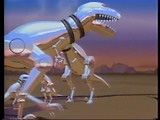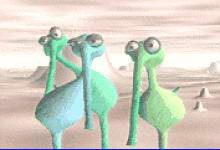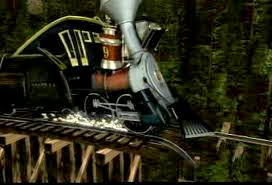Chapter 6: Commercial Companies
6.7 Pacific Data Images (PDI)


Pacific Data Images (PDI) was started in Los Altos, California in 1980, by Carl Rosendahl. He was soon joined by Richard Chuang (1981) and Glenn Entis (1982) and they moved to Sunnyvale.
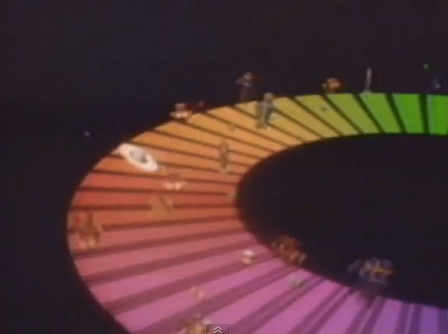
Rosendahl contracted with Rede Globo in Brazil to develop software for their television promotions for the network, and designed some early show opens and specials. As a result, this helped finance the development of their software environment, which included an animation scripting language, modeling, rendering and motion design programs, all written in the C programming language. They started their production using DEC VAX systems, but were instrumental in introducing what was called the “superminicomputer” to the production world, in the form of the Ridge 32 computer. It was 2-4 times faster than the VAX 11/780 at a fraction of the cost, and its virtual memory allowed PDI to expand beyond the 2MB memory limitation of the VAXen. Much like Cranston/Csuri, PDI focused on direct to video production, as opposed to the film output that was being done at Abel and Digital Productions. While CCP used a modified Electronic Still Store (ESS), PDI modified the interface to a Sony BVH-2000 in order to do single frame recording. They also used an IMI500 for motion design.
- Carl Rosendahl
- Glenn Entis
- Richard Chuang
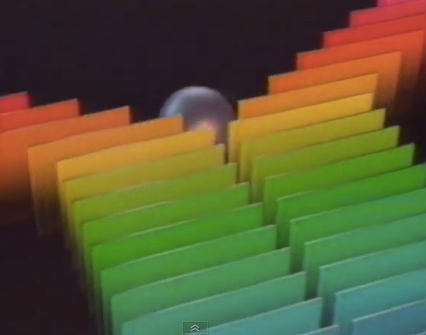
Some of the early production contracts included Globo, an Emmy award winning open for Entertainment Tonight (produced for famed promotion designer Harry Marks[1]), ABC Sports 84 Olympic promos, NBC News, the Doughboy for Pillsbury, Crest, and Bud Bowl, etc. While the early focus was on TV network productions (they captured over 50% of that market in 1985), PDI introduced the digital film scanning process in 1990, which they used to popularize automated rig removal and image touchup. They also were instrumental in introducing performance animation for theme parks, ads and movies, starting with a project (Waldo)[2] with Jim Henson Productions for a real time performance character.
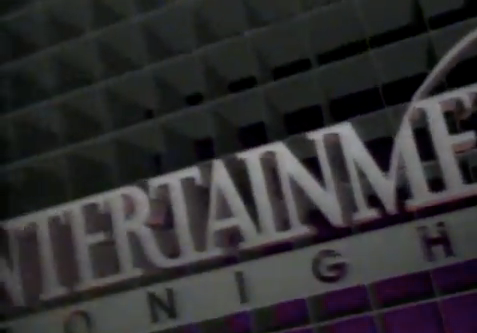
Commercial popularity of morphing was helped along with a music video, Black and White, produced for Michael Jackson in 1990. They broke into the movie production business with contributions to such films as Batman Forever, The Arrival, Terminator 2, Toys, Angels in the Outfield, and produced the 1998 fully CGI hit AntZ. They also produced the Simpson’s Halloween Special Homer in 3D in 1995.
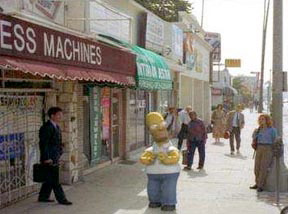
The strengths of PDI include character animation, lip synch, rendering effects, the aforementioned rig removal and cleanup, and performance animation. The industry has acknowledged that their employee-focused approach to business helped them succeed where others failed. PDI always had a history of letting their animators pursue individual projects and shorts, and they produced award winners in this category, including: Opera Industrial (86), Chromosaurus, Cosmic Zoom and Burning Love (88), Locomotion (89), Gas Planet (92), Sleepy Guy and Bric-a-Brac (94).
- Frame from Chromosaurus
- Frame from Gas Planet
- Frame from Locomotion
Entis left PDI for the game industry in 1995, joining Dreamworks Interactive (then Electronic Arts) as CEO. He earned a Scientific and Technical Award from the Academy of Motion Picture Arts and Sciences, was a founding board member of Los Angeles’ Digital Coast Roundtable, and was chairman of the Academy of Interactive Arts & Sciences. Carl Rosendahl sold his interest in PDI and left in 2000 to become managing director for Mobius Venture Capital and a board member of iVAST, an MPEG4 software company, and several other Bay Area technology firms.

In March 1996, PDI signed a co-production deal with DreamWorks SKG to create original computer-generated feature films, including Antz. In February 2000, DreamWorks acquired the majority interest in PDI to form PDI/DreamWorks. Under this union, Shrek, PDI’s second animated feature film, hit theaters in spring 2001, and Shrek 2 in 2004, and PDI also developed the movie Madgascar.
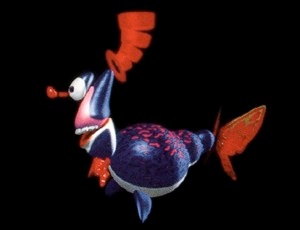
The Academy of Motion Pictures Arts & Sciences (A.M.P.A.S.) recognized PDI’s proprietary animation system with an Oscar, a technical achievement award in 1997. PDI R&D team-member, Nick Foster, was awarded a 1998 A.M.P.A.S. technical achievement certificate for his development of software tools built to simulate water and fluid.
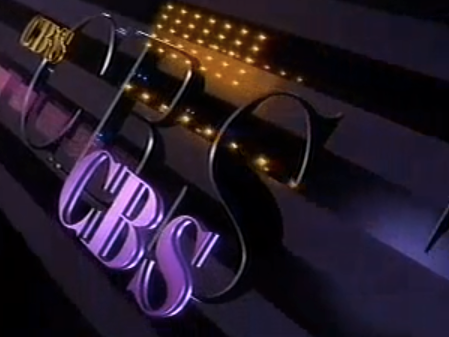
Movie 6.31 PDI Morphing

Famous morphing process produced by PDI for the Michael Jackson Black or White video.
https://www.youtube.com/watch?v=0b1_4NI3XIM
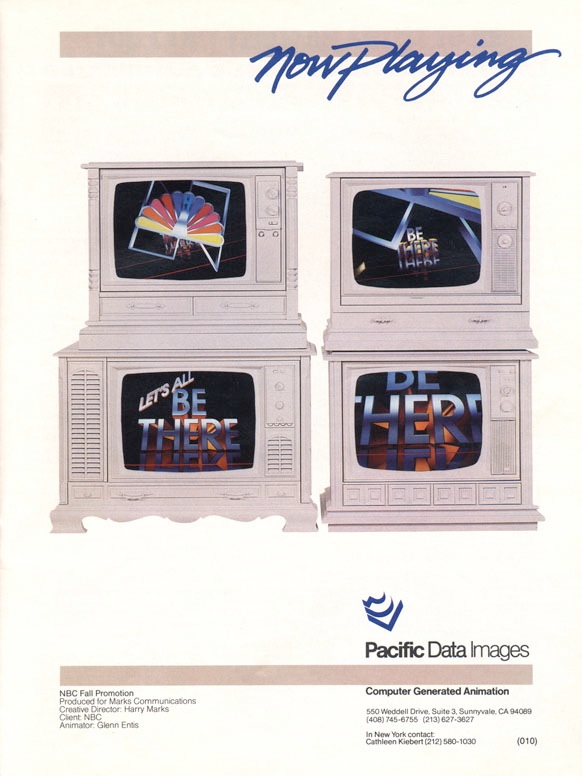
Movie 6.32 Pacific Data Images demo (1983)
https://www.youtube.com/watch?v=b0cHnFxxLC4
Movie 6.33 Locomotion
http://www.youtube.com/watch?v=468W7XW4Kpg
Movie 6.34 Chromosaurus (1985)
http://www.youtube.com/watch?v=HOUYSLStGak
Movie 6.35 Jim Henson demonstrates the Waldo system and Waldo C. Graphic
https://www.youtube.com/watch?v=dP6TUB7KQc4
Movie 6.36 Richard Chuang presents the 25 year history (Movie no longer available… here is a pdf of the slides used in the presentation:
Abstract of Chuang presentation
- Harry Marks is an award-winning broadcast designer and co-founder with Richard Saul Wurman of the Technology, Education and Design (TED) Conferences,or TED talks. He was the producer for films such as Mad Dogs and Englishmen, and was widely known for his work with ABC television. The Monterey Herald reviewed his career in an article in 2013. ↵
- From the Muppet Wiki website: "Despite his CG nature, Waldo was controlled in real time by a puppeteer, making use of a mitten-like motion-capture device called a waldo (which he was named after). Jim Henson had begun experimenting with creating digital characters in the mid-1980s and Waldo's underlying technology grew out of experiments conducted to create a computer generated version of Kermit the Frog. Waldo's strength as a computer generated puppet was that he could be controlled by a single puppeteer in real-time, in concert with conventional puppets. The computer image of Waldo was mixed with the video feed of the camera focused on physical puppets so that all of the puppeteers in a scene could perform together. Afterward, in post production, he would be re-rendered in full resolution, adding a few dynamic elements on top of the performed motion. Waldo's design was led by Kirk Thatcher with input from a variety of other artists, including Timothy Young (who provided concept sketches) and animated by Pacific Data Images, later known as PDI/DreamWorks. Thatcher was greatly influenced by Chris Wedge's 1987 CG Short, Balloon Guy". Waldo C. Graphic was presented in Boston at SIGGRAPH. Walters, Graham. The Story of Waldo C. Graphic. Course Notes: 3D Character Animation by Computer, ACM SIGGRAPH '89, Boston, July 1989, pp. 65-79 ↵
- This article is no longer available online. It was summarized in a Wikipedia page for the movie A Bug's Life, with other references added. An excerpt from this summary can be viewed at https://ohiostate.pressbooks.pub/app/uploads/sites/45/2017/09/Antz-vs-Bugs-summary.pdf ↵



